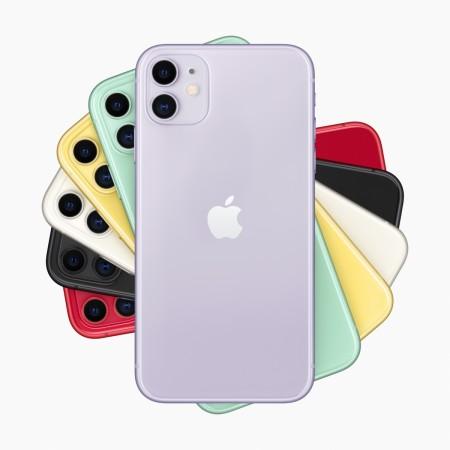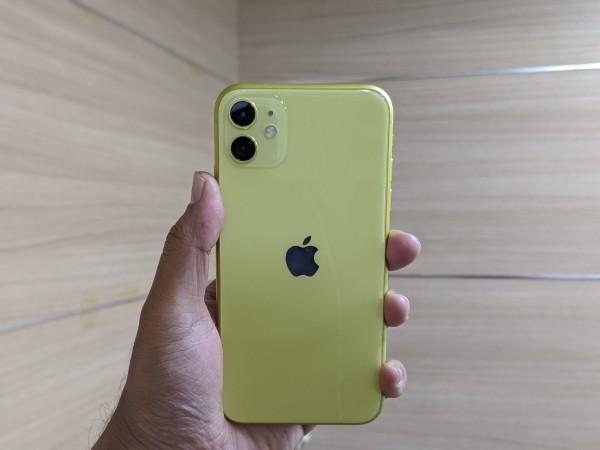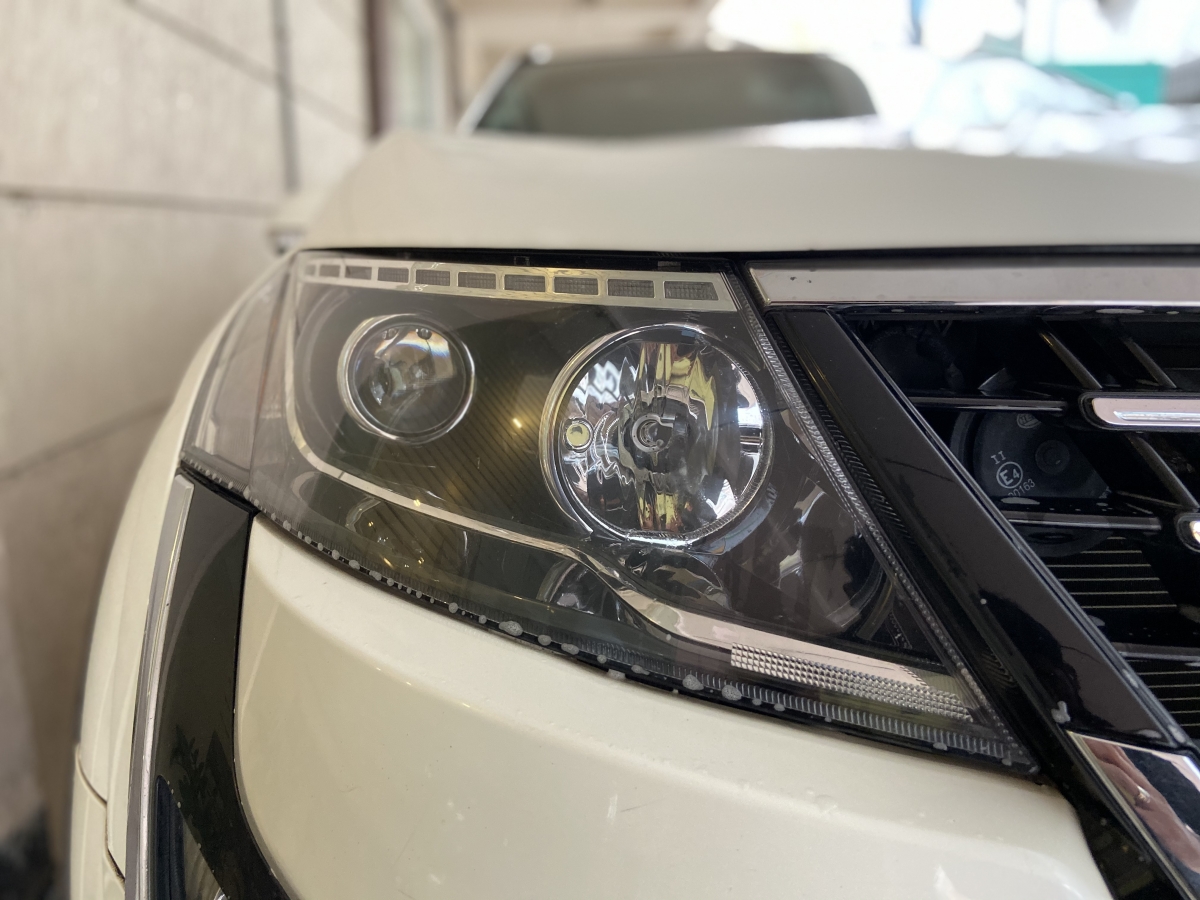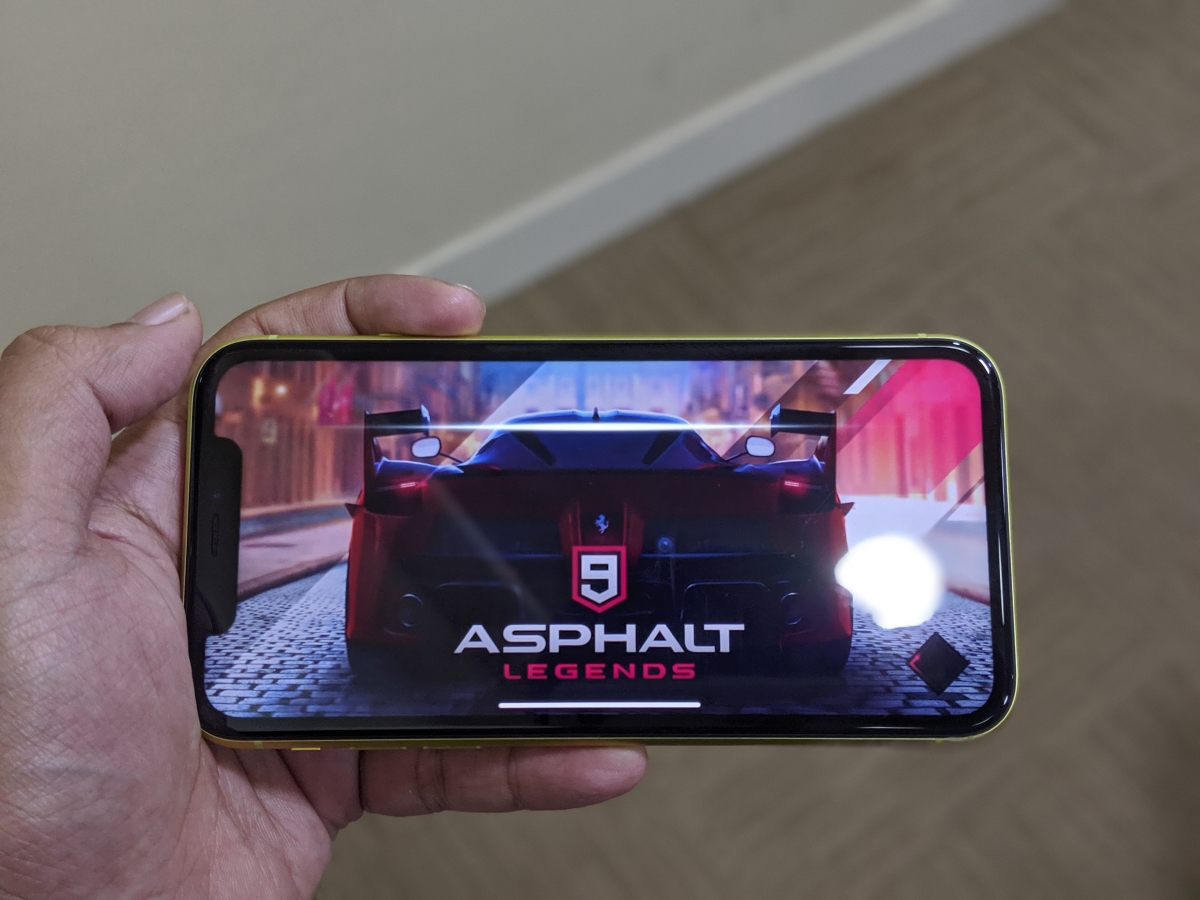iPhones are great but they are as premium as they get, which makes it hard for the masses to adopt the iOS ecosystem. But last year's iPhone XR gave hopes to many that Apple isn't turning away those aspiring iPhone buyers who cannot afford the most premium models and refuse to go with an older generation model. This year, iPhone 11 blurred the lines between the affordable and high-end iPhones.
Apple launched iPhone 11 at Rs 64,990, which falls far away from the iPhone 11 Pro (starting price Rs 99,900) and iPhone 11 Pro Max (starting price Rs 1,09,900). Sure, there are some compromises one must make while settling for the iPhone 11 instead of the "Pro" iPhones, but it's not too bad of a deal. The iPhone 11 is the successor to last year's iPhone XR and we couldn't have asked for a better one.
Apple iPhone 11 attracts a lot of buyers in markets like India, where iPhone XR was a hit. In fact, a recent report from Apple Insider said that the iPhone 11 is more popular than the iPhone XR, selling around 12 million units since the launch in September. That's an incredible feat for a phone that's not as affordable as some Android alternatives, yet commands high demand around the world.

So what makes the iPhone 11 so popular, so special and so worthy? We tested the cheapest 2019 iPhone out and got all the answers.
Look and feel
I've always admired how the iPhones look and feel. They all have this finesse with which they stand out despite some odd renditions. This year's iPhones got the square-shared camera module at the back, which was criticized heavily when the leaked renders had come out. But after seeing the iPhone 11 (or even the iPhone 11 Pro models), it doesn't feel too bad. I can already imagine how this will become the trend like the infamous iPhone notch. Oh, and yes, the notch is still here.

The iPhone 11 feels as premium as the Pro model, with its glass sandwich design. But Apple has decided to give a glossy finish to the back panel and a matte glass in the camera module. But the iPhone 11 is durable, light and handy, (a lot handy if you've used the iPhone 11 Pro Max).
The biggest highlight about the iPhone 11 is the attractive bunch of colours. Apple knows how to carefully choose the right colours that will appeal to buyers. While I have been reviewing the yellow colour, there are black, white, green, purple and Product(Red). My personal favourite is the white and green, but I hadn't seen the yellow one in hand then, which is also now my favourite. I can bet choosing the colour in the iPhone 11 is going to be really hard, they all look so good. All the girls out there can match their nail polish with the new iPhone 11.

Switching from the elegant iPhone 11 Pro Max silver (Review) to the yellow iPhone 11 was a big change, but I didn't have a problem pulling it off. I loved the vibrancy that comes with bright iPhone 11 colours.
Apple has kept the physical buttons, including the elongated power/lock button, volume and silent switch, all the same. The lighting port sits at the bottom alongside the speakers and the SIM card tray is on the right. Everything is well within the reach of the fingers, so I don't have to awkwardly stretch my hand. For single-hand use, the iPhone 11 is an ideal choice.

There's nothing revolutionary about the design. Apple needs to pull up its socks for next year's iPhones as the pressure is building up from Android rivals to innovate
Cameras
iPhone 11 is clearly winning on this turf. Take any smartphone in this price range and the iPhone 11 has got an edge. Borrowing the main 12MP sensor with f/1.8 aperture from the Pro models along with features like Smart HDR and semantic rendering, you'll be impressed by what the iPhone 11 can do.
Since the iPhone XR had only one lens, iPhone 11 feels like a massive upgrade with its secondary 120-degree ultra-wide-angle lens. The cameras have excellent focus speed, gets the right details, contrast and HDR almost all the time. Low-light is still a challenge, but there's night mode to the rescue.

iPhone 11's ultra-wide shots are as good as you'd get from any premium smartphone. In this price range, you get ultimate dramatic shots you can proudly show off. The perfect contrast, high dynamic range, rich colours all make for a brilliant photo in broad daylight. The primary lens is, of course, my favourite and the wide-angle lens works great until it starts to lose details as it gets darker.
Speaking of dark scenes, iPhone 11's night mode is a boon. It works automatically, just like in the iPhone 11 Pro models, and you can always turn it off. The night mode captures more light by exposing the lens to capture light for longer. It merely takes a few seconds longer, 3 at max, and gives desirable results. I've loved Google's Night Sight feature and Apple's night mode comes really close in many cases.
But the wide-angle lens doesn't work with night mode, so if you're trying to capture the cityscape at night, expect not as detailed and bright photo as the primary lens. Better yet, switch to the primary lens and shoot with night mode.

Then come portraits. iPhones are great to shoot portraits. The results are excellent in natural sunlight and even in well-lit areas. But in dim-lit areas, iPhone 11 tends to blur out some details from the subject, like strands of hair, or get some small parts of the background in focus. Overall, the shots are decent, but once you start looking closely, you'll know it's not perfect to shoot portraits in low-light. I loved the fact that portrait works for pets, objects, and not just people. The new High Key Mono portrait is good, but you'll need a really good light to get that perfect professional-level shot. It can be a challenging task, so be patient.
My favourite part of the iPhone 11 camera is the video. For starters, iPhone 11 can shoot 4K at 60fps indefinitely while most phones max out at 30fps or have a time limit at 60fps. The videos are crisp, audio is great, and above all, the videos shot on the iPhone 11 are so stable you'll be stunned to see it was shot without a gimbal. Keeping steady hands will take your cinematography skills to a whole new level.
Switching to the front camera, the selfies are decent. The slow-motion selfie has made its way to the iPhone 11, which is a nice feature to have for fun. I couldn't quite get the different portrait lightings to work with the selfie camera as it was more challenging than the rear camera. But the iPhone 11 lets you shoot time-lapse and even panorama with the front lens, so you can test your creative side.
Check out the camera samples shot on iPhone 11 below:
[Portrait samples]
Ultra-wide angle lens underperforms in low light.
[Night mode on/off samples]
[Full photo gallery]
Overall, if the camera is your priority in a phone then the iPhone 11 is the safest bet.
Performance
iPhone 11 is powered by Apple's A13 Bionic chipset, same as the iPhone 11 Pro models. This could be the single reason why upgrading to iPhone 11 makes more sense to be than the Pro. You're not only saving a lot of cash but also getting the same flagship experience if that matters to you at all.
Imagine playing high-end games or even scrolling endlessly through social media feeds and multi-tasking with various apps on a busy day and your iPhone 11 doesn't break a sweat. It's literally the fastest phone out there, and that's taking into consideration all the Snapdragon 855 and 855+ powered Android phones.
The iOS 13 is just the icing on the cake. The Dark Mode is absolutely great on battery, but I loved how deep the blacks were on the Pro models. After all, iPhone 11 uses an LCD display. But the overall performance of the iOS 13 leveraging the A13 chipset's potential is absolutely brilliant.
Apple's Face ID is still good. No complaints there. But one area where I felt like Android phones have it better is the storage. The free 5GB cloud storage was full in a week's time for me. The 64GB model is the cheapest one and it doesn't really feel generous when Android phones with equivalent price tag offer 128GB onboard storage easily. I really, really wished the base storage model is at least 128GB, even if it meant bumping the price up by a little (not much). Where else would you put all those 4K videos you'll shoot?
Battery
iPhone 11's battery is its strength and weakness. In terms of battery life, it's brilliant. It can last a whole day with mixed usage. I would usually get 5-6 hours of on-screen time until I need to plug the phone again to the charger. With 4G and GPS on at all times, I would use the iPhone 11 for most primary tasks, like communicating via IMs (Hangouts, WhatsApp, Messenger, etc), and calls, browse the web and social media (Instagram, Facebook, Twitter), play at least one game a day, stream for at least 1 hour and look at all app notifications. With this, I would be left with at least 20 percent juice at the end of the day. I only had to charge the phone in the office if I failed to fully charge it at home.
But the biggest drawback is the 5W charger in the box. It feels like falling a generation behind while charging the iPhone. The battery size isn't huge, even then it took well over 2 hours to fully charge the iPhone 11. With phones like OnePlus 7T and Huawei P30 Pro that have incredibly fast charging speeds, iPhone 11 falls far behind in this area. I tested out the fast charging using the iPhone 11 Pro Max's 18W adaptor and it worked great. And my recommendation is users get this fast charging adapter for that extra cost.
Display
Like I said, the dark mode is great, but looked better on the iPhone 11 Pro Max. The LCD display is the culprit and the biggest disadvantage iPhone 11 has. But Apple had to cut costs and what better way than to switch one of the most expensive parts. For most day-to-day tasks, you won't even feel the LCD display is a downgrade. But watching those high-res videos and playing games like Asphalt and PUBG Mobile will instantly tell you the difference.

This is where Android rivals like OnePlus get an edge. The OnePlus 7T series come with AMOLED display with 90Hz refresh rate, which looks brilliantly smooth. That's quite not the case with iPhone 11, and if you compare both phones side by side, you'll know what we are talking about. The colours on the iPhone 11 display appear washed out as compared to AMOLED or OLED displays. Coming from iPhone 11 Pro Max, it felt like a big downgrade.

But again, Apple is giving the best of everything and replacing just one thing to save the masses around Rs 30,000, so I think I can live with iPhone 11.
Should you buy?
Absolutely. There's no reason why you'd want to skip upgrading to the iPhone 11 even if you're on the iPhone XR. It makes so much sense in so many ways. The cameras are exceptional, the performance is next level, the design is much like the Pro models, the battery is reliable and it's not as pricey as its siblings.
Even by industry standards, iPhone 11 feels like a worthy upgrade. The cameras and performance alone can justify your purchase. And if you really don't want that extra elitism of the iPhone 11 Pro, iPhone 11 is a no-brainer flagship choice.














































